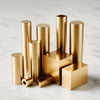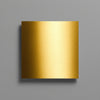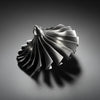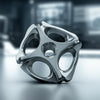
Essential Finishes for CNC Aluminum Parts Explained
Discover key post-processing for CNC aluminum parts. Learn how anodizing, bead blasting, and powder coating enhance durability, corrosion resistance, and aesthetics.

Essential Finishes for CNC Machined Parts: A Tech Guide
Unlock optimal performance for your components. Explore essential post-processing for CNC machined parts, from anodizing to heat treating, and learn how to select the perfect finish.

What is chromate conversion, this blog is enough.
Chromate conversion is a kind of chemical conversion coating. When we put metal parts into the acidic chemical solution(contains chromate), the metal surface will form a thin coating. This coating does not react with most things, thereby it can improving corrosion resistance of substrate and enhancing coating adhesion.

Laser Marking vs Silkscreen: How to Choose The Best Process for Your Parts
The Marking Dilemma
In manufacturing, part identification not only for appearance, but also for achieving specific functions such as traceability codes, safety labels, and branding, all of which impact the product lifecycle, compliance, and user experience. Therefore, we have to choose silkscreen or laser marking process from the cost, durability, material compatibility, and scalability, etc. Sometimes a small mistake of the marking can even lead to a rejected a batch of parts, supply chain delays and a 200% cost over. This blog teaches you how to choose between these two processes based on our factory data.

The Science of Grit Size in Sand Blasting: Precision Surface Engineering
Why Grit Size Dictates Your Surface Finish
Grit size in abrasive blasting isn't just a number—it’s the primary lever controlling surface texture, fatigue resistance, and coating adhesion. Smaller grits (e.g., #220) deliver fine finishes but remove material slowly, while coarser grits (e.g., #60) aggressively shape edges yet risk dimensional inaccuracy. The physics is clear: finer particles increase surface contact points per square inch, enabling uniform peening and residual stress control. However, excessively fine grits (≤50µm) can cause agglomeration, leading to inconsistent impact energy distribution.





